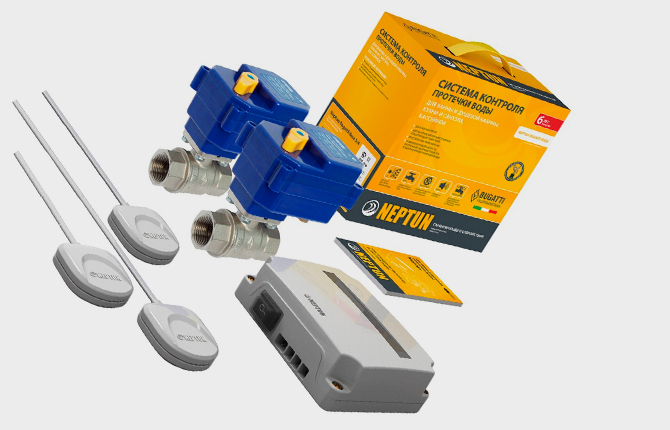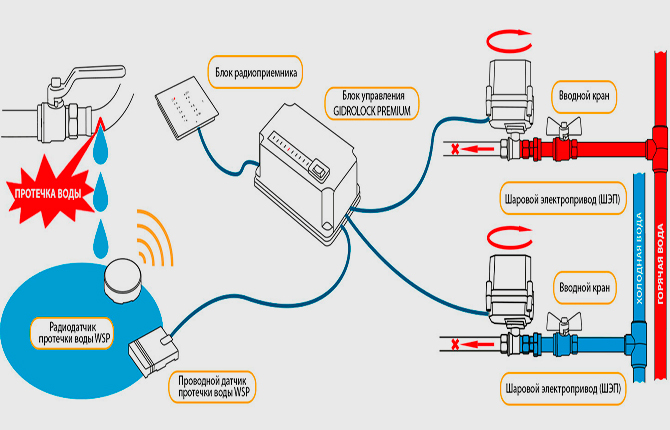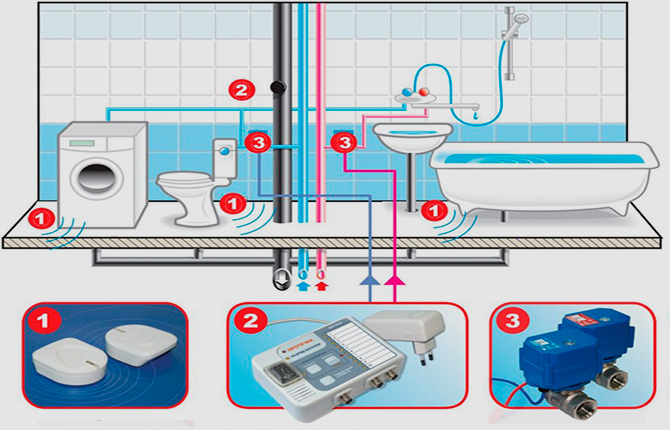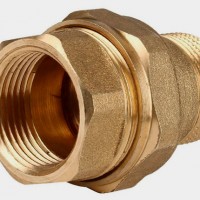Water leakage protection systems: types, principles of operation, installation
Water leakage protection systems are needed to protect yourself from incidents related to faulty pipes or other malfunctions in the operation of hydraulic devices that can lead to a flood. But in order for the product to serve well, you need to choose it correctly, having first studied the properties and characteristics of different models.
The content of the article:
Why do you need a leakage protection system?
Leakage protection systems are devices installed to protect against flooding in the event of an emergency water leak. They are usually placed in the dishwasher or washing machine. These devices are used in all household appliances that work with water.
A flood may occur due to faulty operation of a washing machine, dishwasher, or other equipment. As a result, you will have to pay for repairs to your apartment and moral compensation for your neighbors, who will also suffer due to the water leak. Even insurance will not cover expenses and damages. Therefore, it is easier and safer to install “armor” against leaks. These compact devices help protect against water leaks and also quickly find the source of the problem.
The main element in the design is leakage sensors. They determine the location of the breakdown and report it. The signal enters the control unit. It activates a sound or light alarm. These alerts help owners react in time and fix the breakdown.
If the tap has an electric drive, it automatically turns off the water as a result of a disruption in the operation of one of the water supply sections.
The main thing is to install the sensors in the right place so that they notify you of a leak in time.Otherwise, the signal will be sent when it is too late.
Where are sensors most often installed:
- washing machine and dishwasher;
- washing;
- bathroom;
- boiler or boiler;
- batteries, radiators;
- toilet.
If possible, it is recommended to install protection on all appliances in the house that could cause a flood. This will reduce the risks and possible consequences of water leakage.
How to choose leakage protection systems
The performance of sensors depends on their quality. There are devices that run on batteries, which can run out at any time. It is better to choose sensors that transmit signals over a network. A structure that does not work autonomously may be damaged due to the same leak. If you purchased protection that is activated by batteries, it must be regularly checked for charge level.
To choose the best water leak protection systems, you need to pay attention to:
- Case material. It is not recommended to buy a device made of zinc or silumin (or with their addition). They are more susceptible to breakdowns and damage than others. In addition, zinc taps have a negative impact on water quality. Recommend to buy faucets, made of stainless steel or brass.
- Wires. The longer they are, the less likely it is that they will have to be extended during installation work.
- Type of sensors. The wireless water leakage protection system runs on batteries. Wired - from the controller. The first option is easier to install, because it will work anywhere.
It is enough to install 3-4 sensors in an apartment. Your home will need more of them, depending on the water intake points.
You can install the system yourself. The sensors themselves, operating from the controller, have special connectors. And for wireless models to work, you only need batteries. Before installation, it is necessary to remove oxidation from the pipes. Incorrectly installed devices will last less.
Some people buy radio sensors. But they do not always work correctly due to interference. For a normal signal level, the distance should be no more than a meter. But the quality of work may be affected by interference from modems, cordless phones, etc.
How to install leakage protection systems
Before installing leakage protection systems, you need to draw up a plan for the location of the sensors. This will help you choose the length of the wires. Then they install Ball Valves. If you additionally install filters on the pipeline, they will not only purify the water, but will also extend the service life of the metering devices. After this, power is supplied to the electric cranes (if any).
Sensors are mounted - they are installed on the floor or in its covering. In the first case, you can work on your own, but in the second, you will most likely need the help of a professional.
Lastly, the controller is installed. If the structure is connected correctly, the indicator will display a green signal. In case of leakage or breakdown, its color will change to red. A sound signal will sound to notify the owner of the breakdown.
In order not to harm the system, at the time of troubleshooting, it is recommended to turn off the sensors by manually turning off the water supply. After repair, wipe all elements of the system and reconnect them.
DIY water leak protection system
You can save money and at the same time protect your apartment from a possible flood with the help of self-made leak protection systems.An easy assembly option with a bipolar transistor will help you get a working device with virtually no waste of time or money. To create the system you will need:
- power unit;
- resistor;
- source (for supplying signals).
The components are soldered in series, using the emitter and collector of the transistor. The base is grounded. The sensor base can be made from the cap of a plastic bottle. Since the strength and reliability of such material is worse than that of the original system, it will have to be changed frequently.
A homemade installation does not guarantee trouble-free operation, but it is better than nothing. But still, it is recommended not to save on these devices, because they will help protect the apartment from flooding.
Do you use a leak protection system? Where did you install it? Tell us in the comments. Share the link on social networks, add the article to bookmarks.







